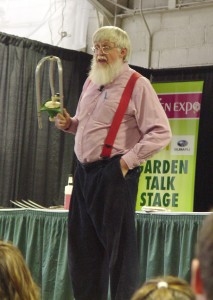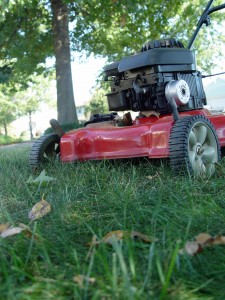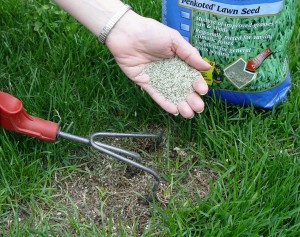Good Enough Grass
April 21st, 2015
As the grass greens on another growing season, many a homeowner (especially of the male persuasian) will spring into action with crabgrass preventer, Step 1 fertilizer, mowers galore and the rest of the “good-homeowner” lawn regimen.
People sink a lot of time, energy and cash into that perfect outdoor green carpet. But a brewing trend is a noticeable bump in the number of people questioning whether all of this is a sensible goal.
One of them is Roger Swain, the red-suspendered former long-time host of TV’s The Victory Garden, who gave an interesting talk on this topic at the 2011 Pennsylvania Garden Expo.
Swain isn’t an anti-grass guy. He just thinks we can do with less of it and with grass that’s “good enough” instead of perfect.
So he came up with what he dubbed “Roger Swain’s 12-Step Plan for the Lazy Lawn-Care Gardener.”
“You won’t win any points from the golf-course manager,” he says. But neither will you get voted out of the subdivision.
Here’s the plan:
1.) Be kind to your mower. “Get your mower out of the garage now,” Swain says. “Try starting it. If it doesn’t fire up now, it’s not going to run in May. But by then the lines at the repair shop will be much longer.”
2.) Be good to your gas. One of the main reasons mowers don’t start in spring is because you left gas in the tank, and it gunked up over winter.
“Run it dry at the end of the year,” Swain says. “Then every time you buy gasoline, add gasoline stabilizer. Put it right into the can. Use 1 ounce for every 2 ½ gallons of gas. It keeps gas from going bad.”
3.) Mind your ears. Swain recommends ear guards for anyone using a power mower.
“Mowing equipment is loud enough to damage your hearing,” he says. “You’ll look stupid, but at least people will see that you can’t hear them.”
4.) Cut high. “Adjust your mower to the highest setting,” says Swain. “Whatever it goes up to, that’s what you want to set it at. Cutting high is better for so many reasons.
“The longer the blades, the bigger the root system. Long blades also mean fewer weeds. The only time to lower the setting is the last cut of the year.”
5.) Mow regularly. “Mow often enough so you’re never removing more than one-third of the grass blades,” he says. “And keep your mower blades sharp.”
6.) Let the clips lay. “Clippings contain lots and lots of nutrition,” says Swain. “At The Victory Garden, we used to steal the grass clippings to fertilize our onions. You remove 40 percent of the nutrients from your lawn each year when you remove the clippings. And no, these don’t cause thatch.”
7.) Rethink irrigation. Precious water is wasted by automatic sprinkler systems that run even on rainy days and shoot water onto the driveway and sidewalk.
Swain says grass naturally goes brown and dormant in drought and almost always returns as good as new when it rains.
“But we want it to be green all year long,” he says.
That comes with a high price.
8.) Weed tolerance. “The best (weed) defense is a thick turf,” says Swain.
Fill in bare or thin lawns with additional grass seed.
Stop applying weed-killers routinely over the whole lawn – including areas where there are no weeds.
And don’t feel it’s necessary to get rid of every last weed.
Swain says clover actually used to be sold with grass seed because it has the ability to produce the nitrogen that grass craves.
“Dig your dandelions and eat them,” he adds. “Once you develop a taste for them, you’ll believe you don’t have enough of them in the lawn.”
In other words, reset your mindset.
9.) Moss isn’t an enemy. “What’s wrong with moss?” Swain asks. “It’s green and you don’t have to mow it.”
Rather than buy chemicals to kill it, he suggests letting moss grow where conditions favor it.
“Sometimes going with the flow makes the most sense,” he says.
10.) Fertilize less. “You really don’t need to fertilize lawns at all,” Swain says, “but if you do, do it in fall, not spring. If you fertilize in spring, all that means is you get to mow more.”
Swain also recommends organic fertilizer for those who want to fertilize.
11.) Undo compacted soil. “Aeration is pushing holes in the ground so air and roots and water can get down into it,” says Swain.
He suggests renting a core-aeration machine that pulls soil plugs out of the ground every 3 to 5 years.
12.) Go meadow. To really cut down on lawn care, Swain suggests replacing turfgrass with a combination of native grasses and perennials to make a meadow.
“Go in once a year and grind it up into rubble, then let it lay,” he says. “The whole process will start over again the next year.”










